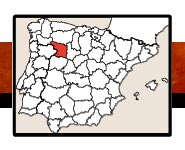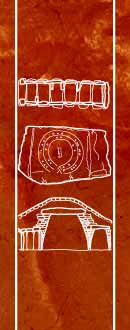


 |
 |
||
 |
|||
 |
(40)/TO-Z/ZAMO-Benave-40.jpg) |
-55/BOOK-cort-40.jpg) |
 |
 |
||
 |
|||
 |
UBICACIÓN - BENAVENTEBENAVENTE: Benavente se ubica en la A-6; aunque si vienes de Orense vendrás por la A-52. El Parador Nacional, solo se visita el exterior. LABRADAS: Desde Benavente coge la carretera de Manganeses de la Polvorosa, en Arrabalde el camino de Alcubilla de los Nogales, tras dejar las ultimas casas, desvíate por una pista en sentido Oeste, y tras 2 Km se llega al yacimiento. RIO ERIA: El Dolmen de río Eria, se ubica a 1 kilómetro al NW del pueblo de Arrabalde, por la carretera que lleva a Alcubilla de Nogales. PETAVONIUM: Desde Benavente coger la (N-525 o A-52), y salida 29 (La Bañeza-Camarzana de Tera), fuera de la autovía coger la carretera de La Bañeza, llegaremos a Santibáñez atravesaremos la calle principal que conduce a La Bañeza y a un Km antes de llegar a Rosinos, encontraremos Petavonium. GRANUCILLO: El dolmen de Las Peñezuelas se ubica a las afueras de Granucillo, dirección Este, esta señalizado. El dolmen de San Adrián se ubica junto a la ermita de San Adrián, a 500 m. al norte del pueblo, esta señalizado. |
 |
LOCATION - BENAVENTEBENAVENTE: Benavente is on the A-6; although if you come from Orense you will come by the A-52. Visit outside. LABRADAS: From Benavente take the road to Manganeses de la Polvorosa, in Arrabalde take the road to Alcubilla de los Nogales, then leave the last houses, turn off by a road to the West , after around 2 Km (1,24 miles) to reach the site. RIO ERIA: The dolmen or Rio Eria, is located 1 Km (0,62 miles) to NW of the town of Arrabalde, by the road that leads to Alcubilla de Nogales. PETAVONIUM: From Benavente take the N-525 or A-52, and exit 29 (La Bañeza-Camarzana de Tera), outside the motorway take the road to La Bañeza, we will arrive to Santibañez, we cross the main street that leads to La Bañeza and one kilometer before to arrive Rosinos, we will find Petavonium. GRANUCILLO: Peñuelas dolmen is located on the outside of Granucillo, to the East, is signposted. The dolmen of San Adrian is located next to the hermitage of San Adrian 500 m. (1640 ft) to the north of the town, is signposted. |
||||
 |
 |
ACCESO PARA MINUSVÁLIDOSBENAVENTE: Accesible para sillas de ruedas. LABRADAS: Acondicionado para sillas de ruedas, lo más interesante esta junto al parking. RIO ERIA: Apto para sillas de ruedas. PETAVONIUM: Apto para sillas de ruedas, pero las distancias son grandes (es un campamento romano). GRANUCILLO: Las sillas de ruedas acceden bien, por un camino estrecho y llano. |
ACCESS FOR THE HANDICAPPEDBENAVENTE: Wheelchair accessible LABRADAS: No conditioned site for wheelchairs, but the most interesting is next to the parking. RIO ERIA: Suitable for wheelchairs. PETAVONIUM: Suitable for wheelchairs, but the distances are large (it is a Roman camp) GRANUCILLO: Users of wheelchairs can access well, by a narrow and level road. |